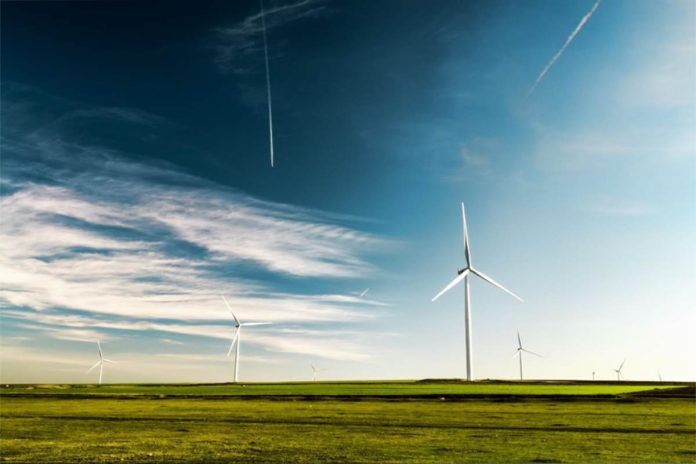A Green Future – As the world faces the challenges of climate change and diminishing fossil fuel resources, renewable energy technologies are stepping into the spotlight. These sustainable alternatives offer an exciting promise of a cleaner, greener future while providing us with the power to fuel our daily lives. In this article, we’ll explore the top five renewable energy technologies that are transforming our world, shedding light on their benefits, and discussing the challenges that need to be tackled.
In regions where renewable energy is becoming more prevalent, it’s important for consumers to stay informed about the options available to them, such as electric providers in Texas. By researching and selecting the most suitable provider based on their renewable energy offerings, individuals can contribute to a greener future and promote the continued growth of these technologies.
Table of Contents
Solar Power
Solar power is generated by harnessing the sun’s energy through the use of photovoltaic (PV) cells or solar thermal power plants. The popularity of solar power has been steadily increasing, thanks to improvements in technology and reductions in production costs.
- Benefits: Solar power emits no greenhouse gases or other pollutants, has an abundant and virtually inexhaustible source (the sun), and has the potential to power a home or business independently.
- Challenges: Solar power is dependent on geography and weather conditions. Additionally, power storage technology is still lagging behind, making it difficult for solar energy to be a consistent source of power during nighttime or cloudy days.
Wind Power
Wind power harnesses the kinetic energy of wind to turn turbines and generate electricity. With the addition of larger and more efficient turbines, wind power has become one of the fastest-growing renewable energy sources globally.
- Benefits: Wind power is a clean, renewable energy source that produces no emissions, is cost-effective and can be rapidly deployed on a large scale.
- Challenges: Wind energy is location-dependent, requiring specific wind conditions for efficient power generation. Wind turbines can also pose challenges related to land use, wildlife impacts, and local community opposition.
Hydropower
Hydropower taps into the energy of flowing water to generate electricity, either through dams, run-of-the-river systems, or pumped-storage facilities. Despite being the oldest renewable technology, hydropower remains a significant player in renewable energy generation.
- Benefits: Hydropower is a stable, baseload energy source that can be easily adjusted to meet fluctuations in demand. Additionally, it does not produce air pollution or consume fossil fuels.
- Challenges: Dam construction can disrupt wildlife habitats and local communities. Moreover, building new large-scale dams is often met with environmental and social opposition.
Geothermal Energy
Geothermal energy is derived from the Earth’s internal heat, capturing steam or hot water from underground reservoirs to produce electricity and heat. Although geographically dependent, it represents an excellent renewable energy source.
- Benefits: Geothermal energy is a reliable, continuous power source that is not affected by weather conditions. It also has a small land-use footprint and can contribute significantly to a region’s energy generation.
- Challenges: Geothermal energy can be associated with high capital costs and restricted to locations with specific geological characteristics. There are also concerns about water consumption and the release of greenhouse gases, though on a much smaller scale than fossil fuels.
Biomass and Bioenergy
Biomass and bioenergy involve using organic matter, such as plants or agricultural waste, to generate energy. A Biomass can be converted into electricity, heat, or biofuels, making it a versatile renewable energy source.
- Benefits: Biomass can reduce waste accumulation and decrease the need for landfill space. It also contributes to the circular economy by recycling waste materials and providing an alternative to fossil fuel energy.
- Challenges: The biomass industry faces competing land-use demands for food, feed, and fiber production. There are also concerns about the sustainability of certain biomass practices and emissions released during biomass combustion.
Tidal Energy
Tidal energy is a renewable energy source that harnesses the power of ocean tides to generate electricity. The Tidal energy systems capture the kinetic energy of ebbing and surging tides with underwater turbines, which can be a promising means of generating clean, continuous energy.
- Benefits: Tidal energy is a predictable, reliable source of power that is unaffected by weather conditions. It has a minimal visual and environmental impact when compared to other renewable sources like wind or solar energy.
- Challenges: The cost for the development and implementation of tidal energy systems can be high, and the technology is still in its early stages. Additionally, tidal power generation is limited to specific coastal locations with suitable tidal ranges and speeds.
Energy Storage
As renewable energy technologies become more prevalent, energy storage solutions are vital for managing power supply and reliability. Energy storage systems, including batteries and pumped hydro storage, can store excess energy generated by renewable sources and release it when needed, ensuring grid stability and reducing reliance on fossil fuels.
- Benefits: Energy storage improves the reliability and stability of renewable energy sources, allowing for better integration into existing power grids. It also provides opportunities for portable and off-grid power solutions in remote areas.
- Challenges: Energy storage technologies can be expensive and require ongoing research and development to reduce costs and increase efficiency. In some cases, battery storage solutions have raised concerns about their environmental impact and resource requirements.
Conclusion
Renewable energy technologies are driving the shift toward a cleaner and more sustainable future. Each technology has its benefits and challenges, but ongoing research and innovation continue to bring us closer to overcoming these obstacles. By embracing and investing in these technologies, we are taking vital steps toward securing a green future for generations to come.

